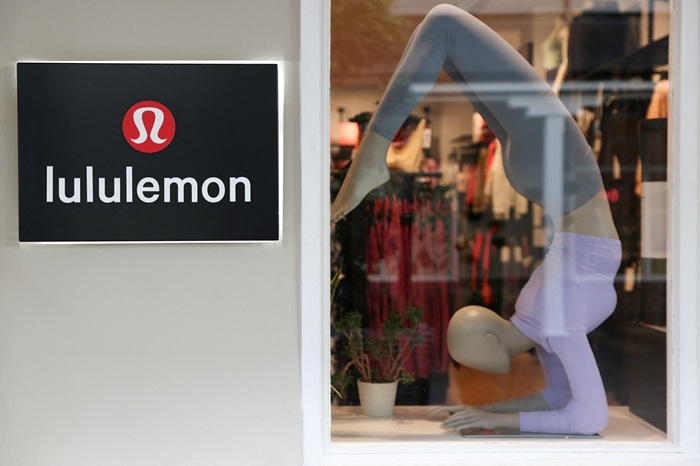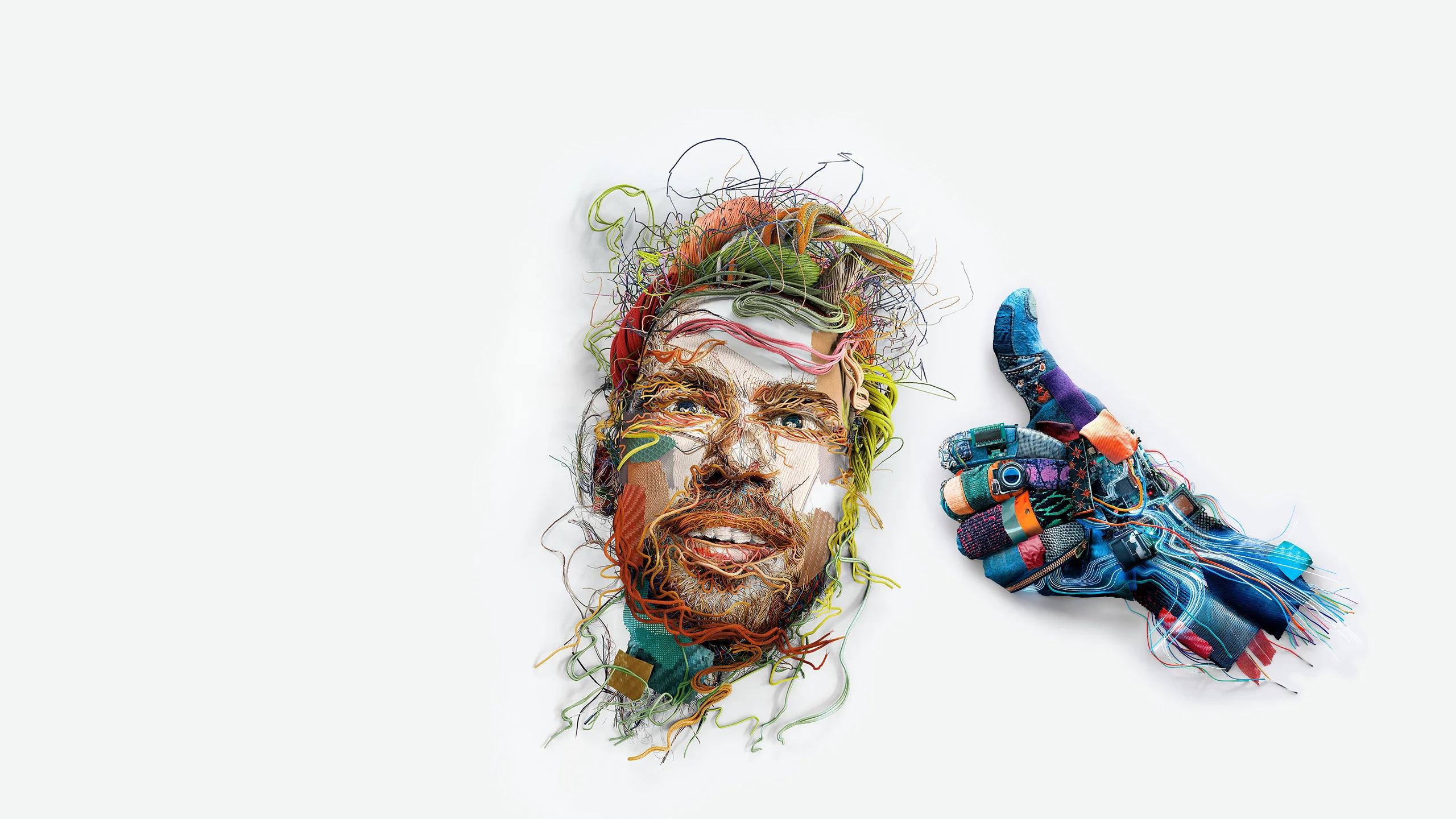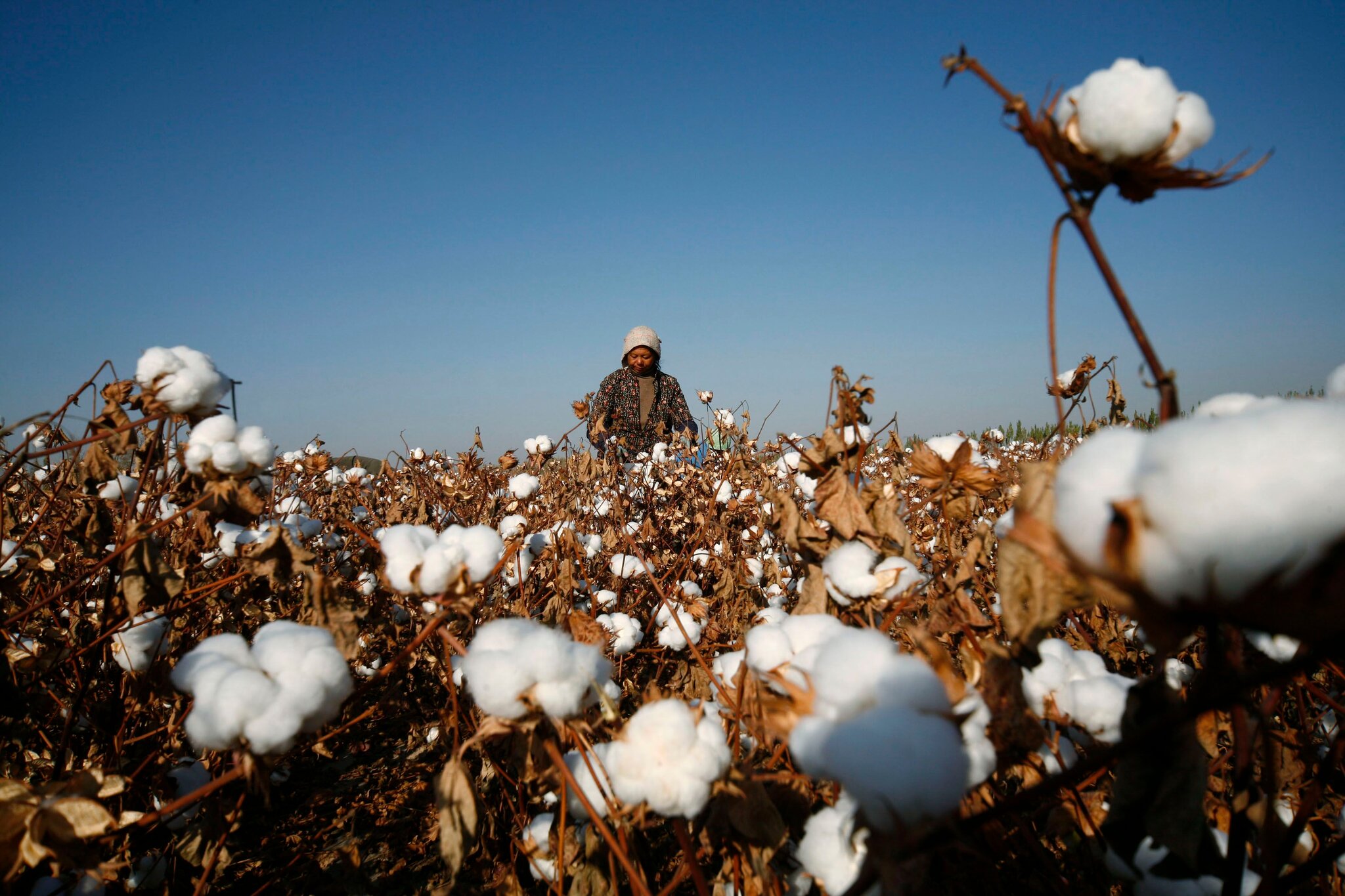FW

The SportTech Pavilion at Techtextil India, hosted by Concepts N Strategies, concluded with a unanimous declaration: for India to successfully execute its "Premium Mandate" and move "Beyond CMT," technical textile innovation and radical sustainability are non-negotiable. The future of Indian activewear relies on turning the factory floor into a science lab that prioritizes green operations and next-generation materials.
Sustainability as a "Given Thing"
For the new generation of brands, the idea of offering sustainable products is no longer a unique selling proposition; it is the entry ticket to the premium market.
● Mindset Shift: Praveen Dhake, founder of the high-performance brand Athlos Activewear, emphasized this critical shift in perception: "Sustainability, I think, at least going ahead for most of the brands, should be a very big component. It should be not just a market." He stressed that his brand doesn't sell a running short because "it’s sustainable," but because it's a "damn good running short" that happens to align with eco-conscious principles.
● Ethical Storyline: The demand for performance must be matched by a transparent, ethical "storyline" that explains how genuinely the product is made, satisfying a global consumer base increasingly aware of the environmental footprint of apparel.
Clean Manufacturing: The green infrastructure mandate
To meet global compliance standards and secure buyer trust, Indian mills are heavily investing in state-of-the-art green infrastructure, moving away from polluting legacy processes.
● Zero impact facilities: Puneet Singla, General Manager Kusumgar Limited detailed his company's commitment, noting that "compliance is also one thing that we live with." This is demonstrated through tangible, massive investments: running a "zero-coil boiler," maintaining a "zero liquid discharge facility," and generating up to "65 to 70 percent of electricity coming from the solar rooftop" panels.
● Eliminating water use: The industry is even tackling one of the most water-intensive processes in textiles. Panelists noted the introduction of technologies like "waterless dyeing," which not only conserves resources but also allows for smaller production runs (e.g., dyeing to the level of 15-20 pieces of fabric), essential for the faster cycles required by international buyers.
The Material Science Frontier: From recycled to bio-tech
The most intense focus is on the raw materials themselves, pushing manufacturers to master synthetic and natural performance fibers.
● Innovation in eco-materials: Brands are expanding beyond conventional cotton, leveraging advanced fibers for high-performance gear. Athlos Activewear exclusively works with fibers like merino wool, recycled nylon, recycled polyester, bamboo, and Tencel. There is also future exploration into bio-tech to pursue non-recycling-focused sustainability.
● Technical fabric breakthroughs: Indian mills are demonstrating advanced capability, achieving production that rivals international leaders. Puneet Singla highlighted the successful manufacturing of fabrics "as fine as 15 denier," resulting in weights as low as 35 gsm—a level of finesse previously difficult to source domestically.
● The Nylon challenge: Despite progress, a critical supply chain gap remains: high-quality nylon yarn. The industry confirmed that the problem of sourcing good polyester is "solved," but brands still need to look overseas for premium nylon. This need has triggered a new mandate for local manufacturers to collaborate and invest in MMF (Man-Made Fiber) processing and spinning plants to close this gap and ensure reliable, consistent domestic sourcing.
The convergence of radical technical innovation and rigorous environmental compliance is rapidly becoming the defining characteristic of India’s competitive edge, ensuring that the country is ready to deliver not just products, but solutions built on a clean and capable foundation.
These panel discussions were held at the SportTech Pavilion during Techtextil India (November 19-21, 2025, in Mumbai). The sessions were titled "The Premium Mandate" and "Beyond CMT" and were moderated by Concepts N Strategies.
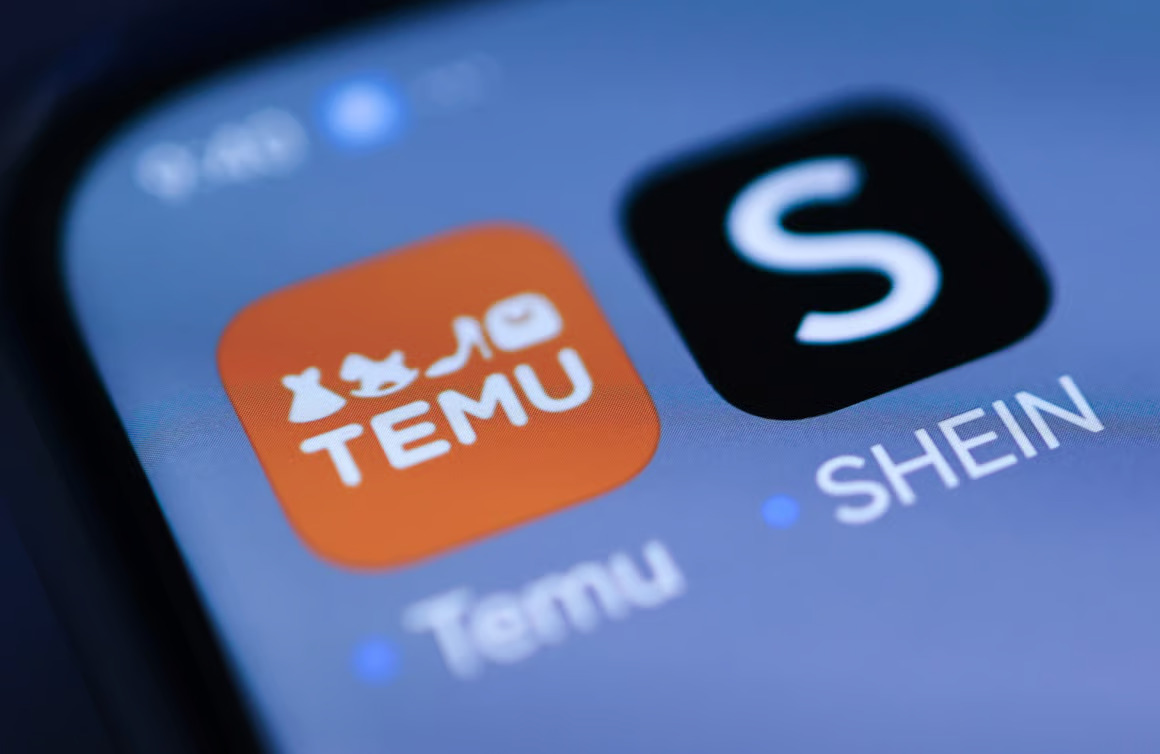
Europe’s fashion and textile scenario is on the verge of its most consequential structural shift in over a decade. The European Union’s plan to abolish the €150 de minimis customs exemption for non-EU e-commerce imports, now fast-tracked for implementation by early 2026 is ready to reset competitive dynamics across the region. For years, this loophole allowed billions of small parcels to enter the bloc duty-free, enabling platforms like Shein and Temu to weaponize ultra-low pricing and scale to capture massive market share.
That asymmetric advantage is now being systematically dismantled. Once the exemption disappears, every cross-border parcel entering the EU will attract customs duties, VAT, and potentially additional handling charges. The impact will be immediate and deeply disruptive, particularly for Chinese fast-fashion exporters whose model depends on high-volume, low-value shipments.
Meanwhile European retail giants such as Inditex (Zara) and H&M, historically disadvantaged by this uneven tax regime are emerging as the biggest beneficiaries. With compliance discipline, proximity production, and established import infrastructure already embedded in their cost structures, the reform acts as a strategic tailwind precisely at a time when they face intense competition from Asian e-commerce titans.
The scale of the loophole
The volume of duty-free parcels entering the EU has rose to levels that few policymakers anticipated. More than 4.6 billion small parcels entered the bloc under the de minimis threshold last year, and over 90 per cent originated from China. These shipments bypassed standard import duty of roughly 12 per cent on apparel, allowing overseas platforms to undercut European price tags by margins traditional retailers could never match. To contextualize the scale of the distortion, the following table shows how the duty-exempt ecosystem ballooned relative to the EU’s apparel import market.
Table: Duty-free e-com parcels vs. overall EU apparel imports (2024)
|
Metric |
Estimate |
|
Total low-value parcels imported into EU |
4.6 billion parcels |
|
Share originating from China |
90%+ |
|
Estimated value of de minimis imports |
€35-40 billion |
|
Standard apparel duty for EU retailers |
12% |
|
Parcels entering with zero duty |
Nearly 100% of de minimis consignments |
The abolition of the exemption not only reintroduces duties but also introduces a proposed €2-per-parcel handling charge an added burden that hits low-ticket, high-volume models the hardest. For an item retailing at €8-10, even minor additional costs can collapse its price competitiveness.
Compliance becomes a competitive filter
Beyond the duty dimension, the EU is simultaneously rolling out its stricter Import Control System 2 (ICS2), requiring all incoming packages to be backed by comprehensive pre-arrival data. This includes accurate six-digit HS codes, detailed product descriptions, and complete declarations standards that many cross-border sellers have historically failed to meet.
Where European retailers already comply with REACH chemical norms, stringent product-safety frameworks, and routine customs processes, low-cost e-commerce exporters face a major structural adjustment. Delays, detentions, and administrative penalties under ICS2 could severely disrupt the speed-dependent, volume-driven model of platforms such as Shein and Temu. To illustrate the operational gap between regulated European import systems and fragmented Chinese parcel-shipping networks, consider the following:
Table: Compliance complexity EU retailers vs cross-border e-commerce platforms
|
Parameter |
Inditex/H&M model (traditional retail) |
Shein/Temu cross-border model (D2C) |
|
Duty & VAT Exposure |
Fully compliant for all bulk imports (pays duty & VAT) |
Minimal to zero under de minimis rule—now ending |
|
Product Safety & REACH Compliance |
Integrated, certified supply base |
Historically inconsistent; audits limited |
|
ICS2 Data Requirements |
Existing infrastructure and integrated ERP systems |
High risk of misdeclaration or incomplete data |
|
Supply Chain Structure |
Near-shoring, consolidated shipments |
Millions of micro-parcels via air courier |
|
Vulnerability to Customs Delays |
Low (due to compliant bulk shipments) |
High under new rules (due to high volume of small parcels) |
The friction introduced by ICS2 is likely to be as impactful as the new customs charges themselves. A packet with incomplete HS codes may face multi-day holds, eroding the instant-gratification proposition that fuels fast-fashion e-commerce.
Why Europe’s traditional retailers stand to gain
The regulatory reset effectively rewrites the competitive calculus in Europe’s online apparel market, where Chinese platforms are estimated to have seized over 20 per cent of digital fashion sales in recent years. With the price gap narrowing and compliance burdens rising, Zara and H&M find themselves positioned to recover lost ground.
One of the most decisive advantages lies in operational agility. Inditex’s signature proximity sourcing model with nearly half its production located in Spain, Portugal, Morocco, and Turkey means shorter lead times, faster replenishment, and lower inventory risk. When cross-border shipments slow or become cost-prohibitive, agility becomes market share.
The rising cost of importing low-value shipments also reshapes consumer behaviour. For millions of price-sensitive customers who flocked to Shein or Temu for €5 tops or €10 dresses, the narrowing price gap may make it more rational to purchase domestically or from established European brands. Even a 10-15 per cent increase in final retail prices for Chinese imports could significantly temper demand.
This dynamic increases revenue potential for European brands, especially in the mid-value fast-fashion segment. With Chinese imports becoming less disruptive, European players can regain footing in categories where they previously struggled to compete purely on price.
Rebalance, not a temporary correction
The EU’s overhaul is more than a regulatory response; it marks the beginning of a long-term redrawing of Europe’s retail competitive boundaries. European retailers have endured years of systemic disadvantage fully taxed, highly regulated, sustainability-compliant while competitor models routed around these obligations through fragmented cross-border parcel flows.
The elimination of the €150 exemption dissolves the foundational economic pillar supporting ultra-cheap fashion imports. Combined with the heavier compliance architecture of ICS2, the new regime takes aim not at volume but at the systems and incentives that enabled vast underpriced inflows.
For European incumbents, the shift gives an opportunity to reclaim pricing power and re-energize online growth. For global fast-fashion disruptors, it introduces cost, scrutiny, and uncertainty into a model that depended on frictionless access. As the EU advances toward a post-de minimis future, the balance of power in the region’s fashion market is tilting decisively. Inditex and H&M companies already structured to absorb regulatory, compliance, and duty costs stand to benefit significantly from the new environment. The customs overhaul is expected to lift operating margins, reduce competitive pressure from Chinese exporters, and catalyse a meaningful shift in consumer buying behaviour back toward established retail brands.
The outcome is clear: Europe is engineering a more level playing field, but in doing so, it is also fortifying the competitive position of its homegrown fashion giants. For fast-fashion e-commerce platforms built on micro-parcel economics, the era of effortless expansion in Europe is coming to an abrupt end.
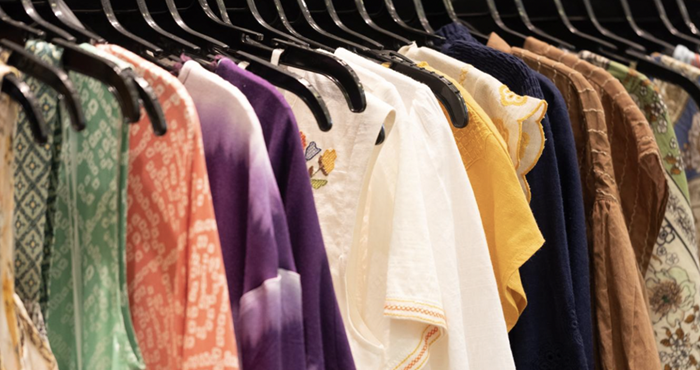
As the global apparel economy enters the final quarter of 2025, trade flows across major markets reveal a sector facing contradictory currents, some markets still soft from inflation-linked demand fatigue, while others rise on renewed consumer confidence and resilient supply chains. Wazir Advisors’ ‘Global apparel trade & retail update report’ for November 2025 gives an overview of latest apparel consumption and trade data for major supplier and buyer nations.
The study on September and October data across imports, exports and retail performance suggest a slow but unmistakable reconfiguration of global sourcing preferences, with Asia’s manufacturing hubs facing uneven momentum and Western markets exhibiting divergent signs of recovery.
Together, these indicators paint a portrait of a global industry at an inflection point, one where brands are recalibrating sourcing footprints, consumers are rediscovering discretionary categories, and traditional export leaders are being challenged by shifting cost and compliance dynamics.
Western import markets split
In September 2025, apparel imports into the world’s largest consumer markets shows mixed results. The US, typically the bellwether of global fashion demand, reported imports of $7.3 billion, a 6 per cent year-on-year decline. This drop, continuing through most of 2025 reflects a consumer base still restrained by sticky inflation and a shift toward value-driven purchases. Retailers have also been cautious in replenishing inventories, opting for leaner stock positions going into the holiday season.
In stark contrast, Europe’s demand revival grew. The EU’s apparel imports hit $10.1 billion, a 13 per cent increase over the previous year, indicating a clear rebound in consumer sentiment. The region has benefited from moderating inflation, an uptick in tourism spending, and a strong appetite for fast-fashion and value fashion segments.
The UK, despite economic pressures earlier in the year, posted one of the strongest rebounds globally. With imports rising 19 per cent YoY to $2.3 billion, the UK is witnessing a reawakening of apparel consumption, driven partly by improved wage growth and a return of in-store shopping.
Asian consumer markets also showed resilience. Japan’s imports grew 14 per cent YoY to $2.5 billion, powered by demand for premium casualwear and the continued shift toward lifestyle-oriented apparel.
Collectively, the data highlights that demand in Western Europe is now outpacing the US, reshaping sourcing priorities for global manufacturers.
Asia’s heavyweights slow in exports, Europe’s niche players grow
On the export side, 2025 has turned into a year of unpredictable momentum. Exporters traditionally viewed as global giants viz. China, Bangladesh, and India faced declines, while several smaller or emerging markets recorded outsized growth.
China’s sharp slowdown marks a structural shift. Still the world’s largest apparel exporter, reported $10.6 billion in October exports, down 16 per cent YoY. The drop is due largely to rising labor costs, compliance pressures, nearshoring by Western brands, and the gradual relocation of basic manufacturing to Southeast Asia.
Bangladesh and India declines reflect a tough global pricing cycle. Bangladesh’s October exports came in at $3.0 billion, down 9 per cent YoY, underscoring ongoing price pressures from global buyers who are shifting orders to lower-cost alternatives such as Myanmar or Cambodia. India fared similarly, with exports down 13 per cent YoY to $1.1 billion in October. Indian exporters have faced headwinds due to a combination of weak US demand, fluctuating raw material prices, and intensifying competition from Vietnam and Türkiye.
Meanwhile Vietnam continues to consolidate its position as a stable sourcing destination, posting $3.9 billion in exports in July, a modest but steady 3 per cent YoY increase. Its competitiveness in synthetics and athleisure categories remains an advantage. Sri Lanka, despite its macroeconomic struggles, recorded $0.40 billion in September exports, up 3 per cent YoY, supported by niche segments such as intimatewear and performance apparel.
Turkey’s decline vs Europe’s rising stars
Türkiye, once the fastest-growing nearshoring hub for Europe, saw exports fall 9 per cent YoY in August to $1.5 billion, a reflection of persistent currency volatility and softening EU demand for mid-market categories. Conversely, Poland and Italy emerged as the standout performers among European manufacturers.
• Poland’s July exports rose 27 per cent YoY to $1.4 billion, driven by its integrated fast-fashion production capabilities for EU brands.
• Italy recorded $3.1 billion in July exports, up 12 per cent, confirming its leadership in luxury, leatherwear, and premium fashion.
• Spain posted a steady 3 per cent YoY increase in August to $1.3 billion, showcasing resilience in mid-premium and fast-fashion segments. Pakistan’s quiet rise
Pakistan’s apparel exports touched $0.82 billion in June, growing 9 per cent YoY, supported by strong demand for knitwear and home textiles, and benefiting from competitive pricing relative to regional peers.
India and the UK show a return to fashion spending
Retail performance in major consumer markets indicates a tentative return of discretionary spending. In India, apparel retail sales in August 2025 grew 7 per cent over the previous year. This increase reflects a revival in festive-season shopping, stronger mall footfall, and steady traction for value fashion now the fastest-growing segment in the country’s retail ecosystem.
The UK also showed signs of recovery, with apparel store sales rising 5 per cent YoY in October 2025. This gain comes after months of suppressed demand and highlights consumers’ gradual return to full-price purchases. These retail growth align with rising import demand seen in both markets, reinforcing a positive near-term outlook for brands operating in these geographies.
Indications of a rebalancing world
The second-half data from Wazir Advisors’ report 2025 suggests that global apparel trade is showing subtle but steady rebalancing.
• Europe is becoming the growth engine of global apparel demand, outpacing the US for the first time in years.
• China’s export slowdown marks a structural shift, not a cyclical one accelerating diversification of sourcing.
• South Asia’s exporters face pressure, especially India and Bangladesh, as buyers push for lower costs and quicker lead times.
• Emerging hubs (Poland, Pakistan, Sri Lanka) are gaining relevance with specialized or cost-competitive offerings.
• Retail demand recovery in markets like India and the UK indicates a stabilizing consumer environment heading into 2026. As brands plan their sourcing strategies for the coming year, the message is clear: the era of predictable trade flows is over. The apparel industry is entering a new cycle defined by agile sourcing, regional manufacturing ecosystems, and a more volatile but opportunity-rich global market.
The French fashion industry faces a challenging 2026, anticipating flat sales amidst persistent global uncertainty. This stagnation mirrors a wider European manufacturing crisis, where unchecked foreign competition—including a significant 12.3% surge in clothing imports during the first half of 2025, has battered domestic manufacturers. However, French authorities are leveraging stringent new environmental policy as a structural defense mechanism to foster a competitive, high-value ecosystem, which currently employs 1.3 million workers across the EU.
Investment in traceability and circularity
Effective October 2025, France's pioneering Écobalyse regulation (Environmental Cost labeling) requires brands to disclose a product’s full life-cycle impact, from raw materials to end-of-life. This transparency tool, the first of its kind, is designed to reward domestic sustainability investments. This aligns with the EU’s commitment to invest up to €60 million through the European Partnership for Textiles of the Future (2025–2030) to boost R&I.
This focus on mandatory traceability and circularity is seen as essential leverage. As one industry leader stated, "Mandatory disclosure, backed by financial support, is the only way to transform our €170 billion ecosystem into a resilient, high-value industry, countering the low-cost import threat that operates outside these environmental requirements." France is further reinforcing this approach by increasing its national textile recycling aid to €57 million in 2026, positioning itself at the forefront of the upcoming EU Circular Economy Act.
Zara's launch of a sprawling 7,200 sq. meter flagship on Barcelona's Paseo de Gracia underscores a powerful shift among global apparel giants. For Inditex, Zara's parent, the strategy is not merely expansion but consolidation through 'phygital' monoliths. Unlike emerging Direct-to-Consumer (D2C) brands that rely on external capital to secure their first international physical entry points, Inditex is fortifying its core mature markets. This new store, replacing multiple smaller outlets, demonstrates the company’s commitment to an integrated model, which is essential to maintain its luxury-lite market position.
Digital integration and financial scale
This focus on immense, high-tech formats drives significant economic scale. Inditex reported robust financial health with 11% sales growth in the first half of the year, proving the viability of this omnichannel approach. As CEO Óscar García Maceiras noted, "Our integrated store-and-online model allows us to leverage physical infrastructure for logistics efficiency." The Barcelona store serves as a key case study: it acts as a primary distribution hub and marketing statement, featuring automated click-and-collect points and seamless app integration. This physical footprint reduces last-mile delivery costs—a direct counterpoint to the spiraling customer acquisition costs plaguing pure-play online entrants globally.
The net-zero industrial design championed by individual units is now transforming the broader Indian textile landscape, providing a powerful financial model for growth. The Tiruppur knitwear cluster, which accounts for 55% of India’s knitwear exports, has seen exports rebound sharply, logging a 22% year-on-year increase in August 2024. This recovery, following an 11% dip in the previous fiscal year, is directly attributed to the "Green Tiruppur" sustainable strategy. New research shows that manufacturers are prioritizing sustainability to target a significant 2-3x rise in profits over the next few years.
Net-Zero model becomes capacity edge
The cluster's historical investment in sustainability now functions as a major competitive edge (Growth Plan). The region is generating approximately 1,900 MW of wind and solar power—nearly five times its operational energy requirement—positioning the cluster as a carbon-negative zone. Furthermore, the widespread adoption of Zero Liquid Discharge (ZLD) systems, which recycle processed water, has made the hub water-neutral. This radical overhaul provides the required capacity and compliance for large-scale production.
Global mandate attracts major buyers
The move is cemented by global compliance challenges, such as the EU's Carbon Border Adjustment Mechanism (CBAM), which penalizes high-carbon imports. This context has made compliance non-negotiable, and Tiruppur's verifiable ESG performance is now attracting major global buyers, including Gap and Tommy Hilfiger, who are re-routing substantial orders to the region. The industry is demonstrating that the path to resilient export performance is intrinsically linked to pioneering environmental stewardship.
While broad retail data reflects caution (with some clothing categories posting negative readings in recent US sales reports), a stark divergence is redefining the apparel sector’s financial outlook. The new resiliency champion is value fashion. Recent industry analysis highlights this split, with a collective of value-focused players reporting an aggregated 33% year-on-year revenue increase in the latest quarter. This spike is primarily fueled by aggressive expansion—nearly 20% retail area addition—into Tier 2 and beyond markets, underscoring a permanent post-inflation shift where over 60% of global shoppers prioritize price.
Agility: The $275 bn tech pivot
The strategic challenge for all brands is proving their value proposition. Agility and technology adoption are now non-negotiable for future growth plans. Executives are accelerating investments, recognizing that Generative AI alone could add $150–$275 billion in operating profits to the fashion sector over the next three to five years. This tech push—from AI-driven trend forecasting to in-season inventory optimization—is critical for brands seeking to maintain tight gross margins amidst persistent macroeconomic volatility.
Major brand reinvigoration
Even established apparel giants are capitalizing on this focus. Gap Inc., a U.S. specialty apparel company operating brands like Old Navy and Banana Republic, recently reported its third-quarter fiscal 2025 results with a robust 5% comparable sales uplift. This performance, which led the company to raise its full-year operating margin outlook, is attributed to a "reinvigoration playbook" centered on disciplined cost control and product elevation. This suggests that while shoppers are cautious, they reward brands that offer a compelling blend of refreshed product and proven reliability.
Europe’s textile and clothing industry, a vital ecosystem comprising roughly 200,000 companies and 1.3 million workers with an annual turnover of €170 billion, is facing a severe structural threat driven by uneven global competition. Data for the first half of 2025 reveals a crisis: textile production fell by 1.9% and clothing production dropped by 5%, while employment decreased by up to 5% across the sector. This contraction is fueled by a massive surge in non-compliant foreign imports, which rose by 7.7% for textiles and 12.3% for clothing during the same period.
Closing the customs "De Minimis" loophole
The industry’s representative body, EURATEX, warns that this competitive imbalance stems largely from the de minimis exemption. This loophole allows millions of low-value parcels (under €150) to enter the EU daily without standard customs, VAT, or safety checks. The problem is exacerbated by certain national postal operators in countries like Poland and Italy, who are reportedly accelerating deliveries for ultra-fast fashion platforms such as Temu, actively widening the regulatory gap.
EURATEX President Mario Jorge Machado affirmed that while the recent European Parliament resolution for stronger market surveillance is welcomed, "the real test starts today." The industry is demanding decisive legislative action, specifically the abolition of the de minimis exemption, to restore a level playing field and prevent the further erosion of European industrial standards. The forthcoming ECOFIN meeting on December 12 is viewed as a critical milestone for enacting these overdue reforms.

India’s textile and apparel export sector is showing a remarkable capacity to adapt and thrive in one of the most turbulent global trade environments in recent years. From punitive US tariff shocks to unpredictable demand cycles across international markets, the sector’s first-half performance (April-September 2025) reveals not just survival, but strategic reinvention.
Despite the headline showing a marginal 0.39 per cent growth in overall global exports, a deeper look at the numbers tells a different story one of intentional diversification, policy-backed resilience, and targeted expansion into new and emerging markets. The textile industry, one of India’s largest employment generators, is quietly rewiring its export engine for a more volatile global order.
Flat global growth, strong market focus
The data for the April-September period captures a dual-speed export reality. While global shipments of textiles, apparel, and made-ups saw only muted growth, rising from $17.66 billion to $17.73 billion, a negligible increase of 0.39 per cent the sector’s performance in targeted growth markets tells a far more encouraging story.
Table: India’s export performance April-September 2025
|
Metric |
April–September 2025 |
April–September 2024 |
Change |
Takeaways |
|
Exports to 111 Targeted Markets |
$8,489.08 mn |
$7,718.55 mn |
+10.0% |
Focus areas grew robustly. |
|
Overall Global Exports of Textiles, Apparel & Made-ups |
$17,735.56 mn |
$17,666.51 mn |
+0.39% |
Sector was largely flat (marginal 0.1% growth mentioned in image text). |
The 10 per cent growth in the 111 priority markets compared to the almost stagnant global number highlights a sector that is consciously moving away from its traditional overdependence on a handful of legacy destinations, particularly the US and Europe. This strategy mirrors India's broader export pattern. While India’s total merchandise exports grew by 3.02 per cent, textiles significantly outperformed in markets where government-led diversification strategies have been applied with precision. Ready-made garments (RMG) and jute were among the notable bright spots RMG grew 3.42 per cent, while jute expanded 5.56 per cent, signaling sustained global demand for natural fiber-based, sustainable products.
The rise of non-traditional markets
If the last decade was defined by dependence on the US and EU, this year marks the beginning of India’s new export geography. Several emerging markets delivered double-digit growth, providing vital cushioning against the steep decline in tariff-affected markets like the US.
Table: Market growth trends (Apr–Sep)
|
Market |
Growth (YoY) |
Interpretation |
|
Japan |
+19% |
Strong traction for high-quality apparel and technical textiles; Japan emerges as India’s stability market. |
|
UAE |
+14.5% |
A regional re-export and retail powerhouse; Indian brands seeing renewed traction. |
|
France |
+9.2% |
Premiumization and sustainable materials are driving orders. |
|
Spain |
+9% |
Fast-fashion and mid-market retailers increasing sourcing from India. |
Table: New market momentum
|
New Region |
Growth (YoY) |
Interpretation |
|
Hong Kong |
+69% |
Reflects China+1 shifts and sourcing realignments. |
|
Egypt |
+27% |
India filling supply gaps after local currency pressures and import constraints. |
|
Saudi Arabia |
+12.5% |
Retail modernization and new mall expansion fueling apparel growth. |
This diversification is not accidental. It stems from sustained engagement through trade missions, revamped export incentives, and collaborative agreements pushed aggressively under India’s Make in India and Aatmanirbhar Bharat frameworks.
US tariff hits India’s largest market
The most dramatic shock of the year came from Washington. In late August, the US slapped a 50 per cent tariff on multiple Indian goods including textiles and apparel ostensibly in response to India’s continued imports of Russian oil. For a sector where the US traditionally accounts for nearly 28 per cent of all exports, the impact was immediate and severe.
Table: September 2025 tariff shock, decline in US shipments
|
Segment |
September 2025 value |
September 2024 value |
Change (YoY) |
|
Ready-Made Garment (RMG) Exports |
$997.54 mn |
$1,110.15 mn |
-10.14% |
|
Textile Exports (excluding Apparel) |
$1,624.06 mn |
$1,813.63 mn |
-10.45% |
|
India's Overall Exports to US |
$5.46 bn |
$6.20 bn |
-11.93% |
The US decline stands in stark contrast to double-digit export growth in non-traditional markets. It also highlights a structural vulnerability: India’s largest buyer can dramatically shift sectoral momentum with a single policy decision.
India responds with a $5 bn export lifeline
To counter the tariff shock and boost exporter liquidity, the government of India announced a powerful package combining direct export support, credit guarantees, and compliance funding. At the heart of this policy overhaul is the Export Promotion Mission (EPM), a unified, nearly $ 3 billion or Rs 25,060 crore program running through FY 2030-31. Alongside this is a $2.3 billion credit guarantee scheme, replacing multiple older schemes and creating a streamlined, MSME-friendly system.
Table: Components of EPM
|
Sub-Scheme |
Focus Area |
Goal |
|
Niryat Protsahan |
Financial Support |
Provide affordable trade finance and credit guarantees to MSME exporters, helping them absorb tariff costs and maintain liquidity. |
|
Niryat Disha |
Export Readiness & Compliance |
Enhance global competitiveness through support for quality certification, global branding, logistics, and meeting non-tariff barriers, essential for competing with lower-tariff countries like Vietnam and Bangladesh. |
The industry views this as the most cohesive export framework in over a decade. By unifying fragmented schemes, the government aims to increase scale efficiency, ease of compliance, and competitiveness.
De-risking, re-skilling and re-positioning
The sector’s growth path for 2026 and beyond will be shaped by two factors: market de-risking and manufacturing competitiveness.
Market diversification as a strategic insulation: The strong growth in 111 targeted markets provides a blueprint for insulating exports from political or economic shocks. Fast-moving FTAs with the UK and EU are expected to offer duty-free access potentially transforming India’s pricing advantage over Vietnam, Turkey, and Bangladesh.
Infrastructure-led competitiveness: The PM MITRA Parks, seven mega integrated textile and apparel zones are designed to cut logistics costs by up to 10-12 per cent, improve turnaround times, and allow India to compete more effectively with China’s vertically integrated clusters.
The $100 bn ambition: India aims to more than double its textile and apparel exports to $100 billion by 2030. While ambitious, analysts say the first-half performance shows the foundational pieces are falling into place: wider export geography; stronger policy scaffolding; shift toward value-added products; better logistics and integrated parks; early FTA tailwinds
Thus India’s textile industry enters 2026 with scars from tariff shocks, but with renewed confidence and broader shoulders. The sharp US decline could have crippled the sector a decade ago. Instead, today it stands more diversified, better supported, and more globally aligned than ever.
By betting on emerging markets, accelerating policy reforms, and building world-class supply-chain ecosystems, India is crafting a more shock-resistant export engine one capable not only of surviving global turbulence but of shaping new competitive spaces.
Sri Lanka’s apparel and made-up articles sector demonstrated resilience, recording a robust 6.12 percent year-on-year increase in total exports for the cumulative period of January to October 2025. The Joint Apparel Association Forum (JAAF) noted that the sector "continues to hold steady despite challenging global conditions," highlighting the industry's ongoing investments in competitiveness. This strong performance saw total apparel exports sustain momentum over the first ten months of the year.
Market Divergence: EU powers ahead
While the overall January-to-October performance was strong, October 2025 saw a marginal decline of 0.05 percent compared with the previous year. This slight dip was driven by major market slowdowns, as shipments to the USA fell by 1.92 percent, and exports to the UK dropped by 11.99 percent during the month. Conversely, the European Union (EU) remained a powerhouse, recording strong growth of 12.53 percent in October. For the cumulative period, exports to the EU showed a substantial 14.05 percent increase, while the USA recorded more modest growth of 1.37 percent.
Industry Outlook: Diversification and policy support
JAAF emphasized that the positive cumulative figures "reflect the industry's resilience" and its commitment to meeting international buyer needs. Exports to the UK and other markets also reported modest cumulative growth of 0.98 percent and 8.31 percent, respectively, over the same period in 2024. Looking ahead, the industry views sustained market diversification and consistent policy support as essential to build on this momentum.


